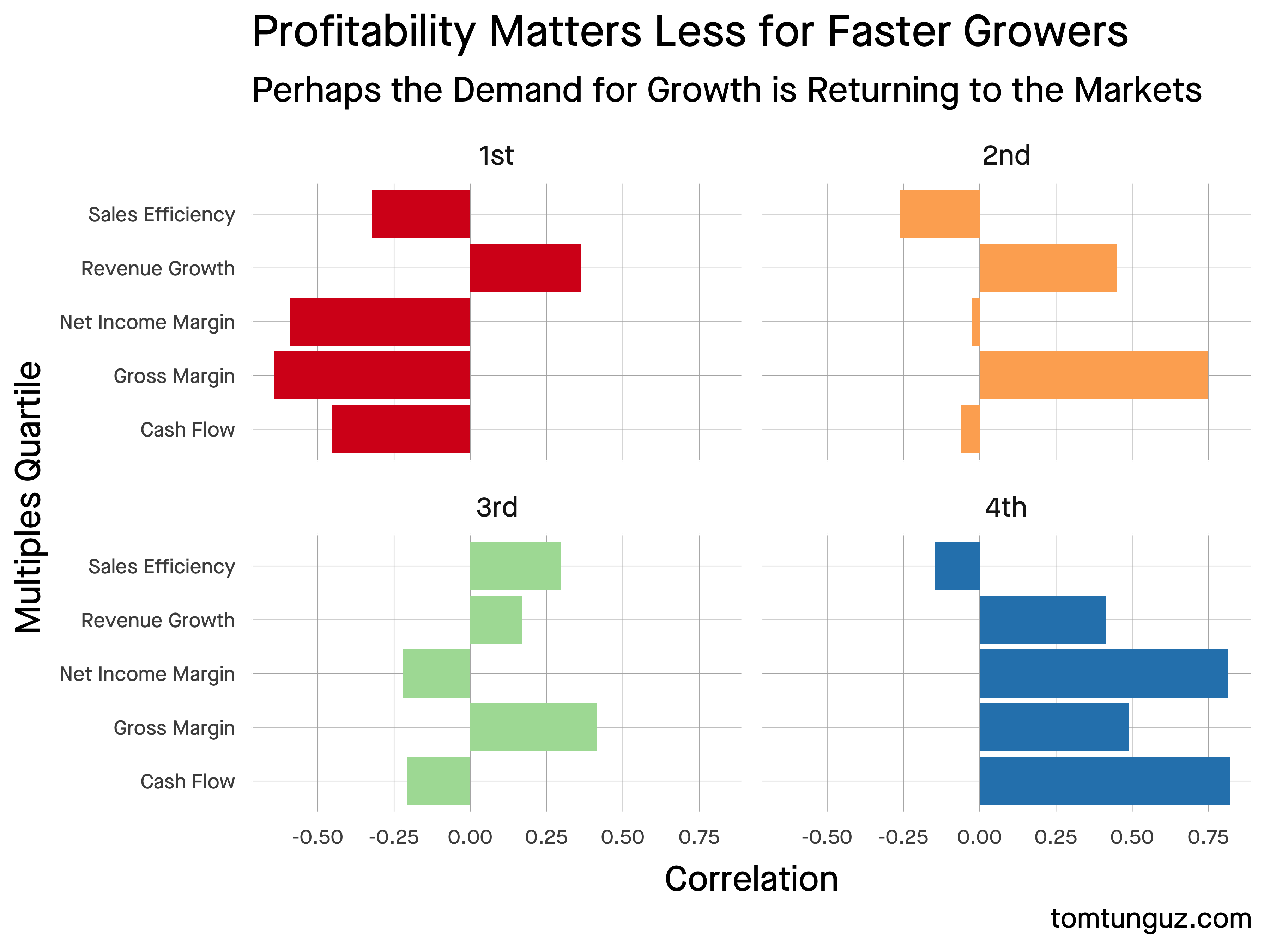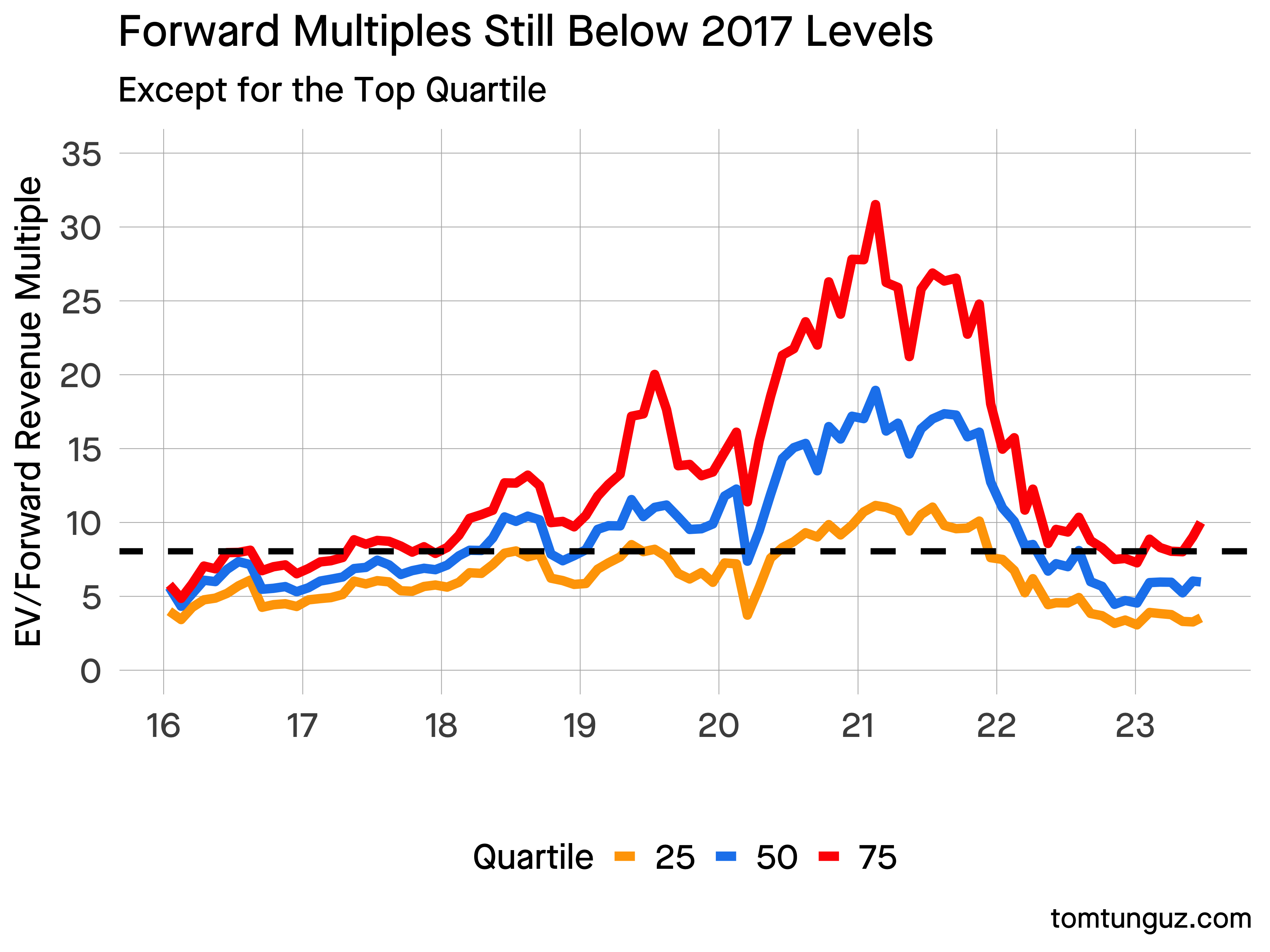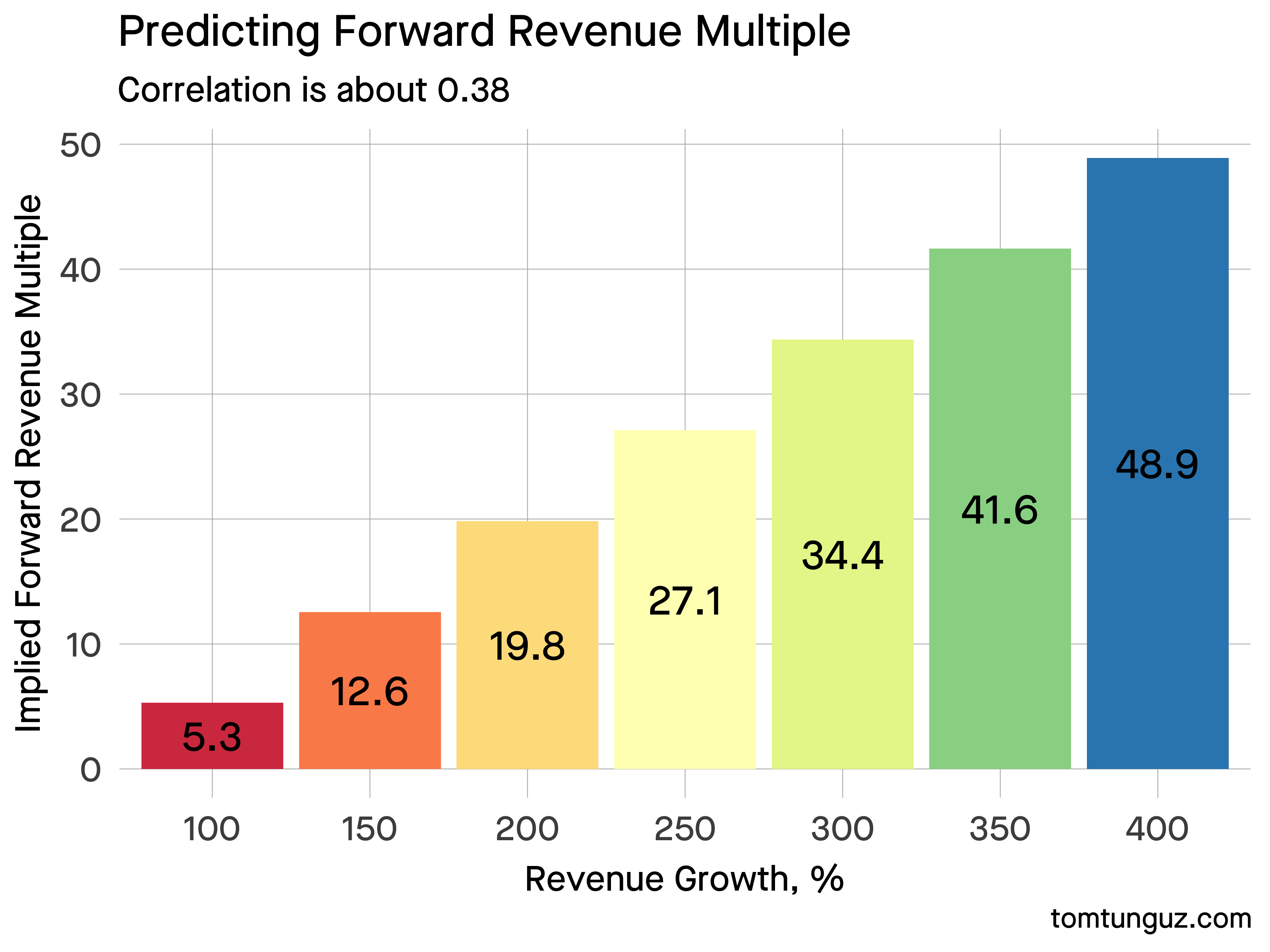In August of last year, public markets switched from valuing SaaS companies primarily on growth to primarily on profitability. In the past two months, high-flying software companies have seen 40-112% increases in valuation.
I wondered if the public markets have begun to change the way they value these businesses.
The answer is yes - if you’re a top quartile company.

Above is a chart that shows the correlation to forward multiple for each of five metrics broken down by quartile.
The companies in the top quartile see only one positive correlation to their forward multiple : revenue growth. Efficiency metrics like sales efficiency, net income margin (profitability), gross margin are all negatively correlated.
On the other hand, the bottom quartile companies’ multiple is much more influenced by cash efficiency metrics : cash flow & net income. Growth remains essential, but it must be efficient growth. Middle quartiles have some combination of factors in-between.
In other words, the slower the grower, the greater the value of profitability. The faster growing the company, the less it does.
As a result of this dynamic, top companies’ valuations have rebounded recently, but not the bottom quartile.

If we build a simple linear regression to predict forward multiple for a company with a sales efficiency of 0.6, a gross margin of 0.71, a net income margin of -100%, a cash flow margin of -100%, & let the revenue growth increase by 50%, we can see the predicted multiples given current market conditions. This model has an adjusted R^2 of 0.38, so just mediocre prediction capability.

But the idea that the fastest growing companies are trading at very high multiples valued primarily on growth - especially AI - is undoubtedly true in the privates as much as the publics.
For everyone else, strong unit economics & margins matter more than in a decade.